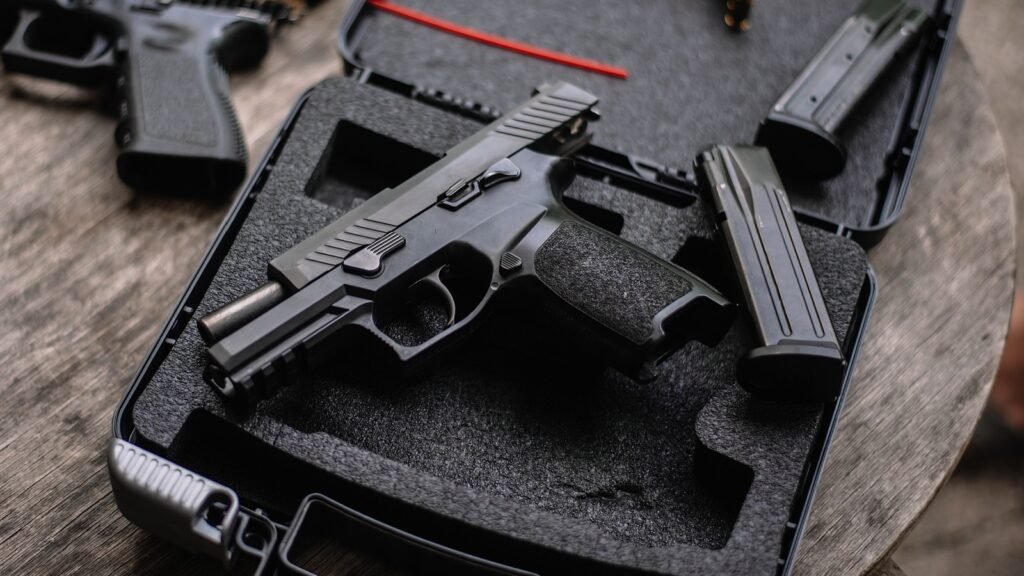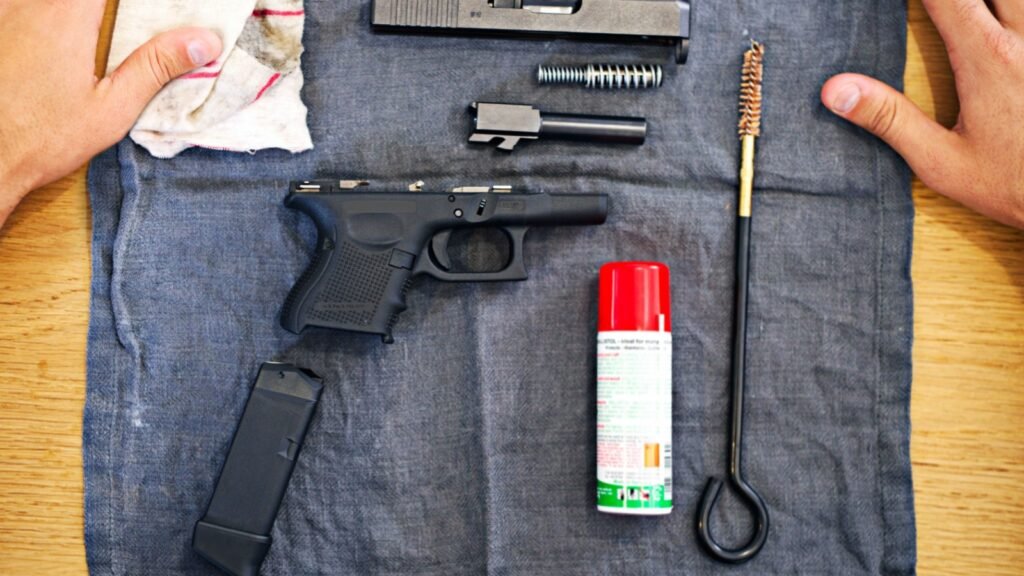When it comes to firearm ownership, regular maintenance is often seen as a chore, but it can literally be a matter of life and death. A well-maintained weapon is not only more reliable, but it’s also safer to handle. In a survival situation or during self-defense, your firearm must function properly at all times. I’ve seen too many people neglect the small things, and that’s where trouble starts. It’s easy to overlook some of these critical maintenance tasks, but doing so can lead to misfires, malfunctions, or worse. Whether you’re a seasoned gun owner or just starting out, these tips can help keep your firearm ready for anything.
1. Clean Your Barrel Regularly

It might seem obvious, but regularly cleaning your firearm’s barrel is essential. Fouling from gunpowder and bullet residue builds up quickly, causing accuracy to suffer and increasing the chance of a misfire. A clean barrel allows the bullet to travel smoothly, improving performance. I recommend using a bore snake or a cleaning rod with solvent to make sure it’s spotless after every use.
2. Check for Rust in Unlikely Places

Many people focus on the exterior of their firearm, but rust can form in hidden spots, especially in the magazine well, trigger assembly, or inside the slide. Moisture can sneak in when you’re outdoors, and even the oil from your hands can promote corrosion over time. Regular inspections and a light coat of oil on metal parts can prevent rust from taking hold in these hard-to-reach places.
3. Inspect the Firing Pin

The firing pin is one of the most important, yet often overlooked, parts of your firearm. Over time, it can wear down or become misaligned, causing light primer strikes and misfires. Every few cleanings, make sure to disassemble your gun and check the firing pin for any damage. If you notice any wear or bending, it’s time to replace it before it fails when you need it most.
4. Keep Your Magazines Clean and Functional

Magazines are often forgotten in the cleaning process, but they are crucial to your firearm’s functionality. Dust, dirt, and even lint can accumulate in them, leading to feeding problems. A simple wipe-down of the magazine and the inside of the magazine well will help prevent jams. Also, check the springs to ensure they are still providing adequate tension.
5. Don’t Over-Oil Moving Parts

Many people believe that more oil equals better performance, but that’s a misconception. Over-oiling your firearm can cause dirt and grime to stick to moving parts, leading to gunk buildup and jams. A light, even coating of oil on critical areas such as the slide, bolt, and trigger assembly is enough to keep things running smoothly.
6. Use the Right Solvent for the Job

Not all cleaning solvents are created equal. Some solvents can be too harsh, stripping away protective finishes or harming delicate components. Always choose a solvent that’s designed for the type of firearm you’re cleaning. Check the manufacturer’s recommendations, and don’t skimp on quality—cheap solvents can do more harm than good.
7. Tighten Screws and Fasteners Periodically

Over time, the screws and fasteners on your firearm can work loose due to recoil and regular use. It’s easy to miss these small parts, but they hold everything together. Make it a habit to check the screws on your sights, grips, and scope mounts periodically. A loose sight or scope could be disastrous when you need to take a precise shot.
8. Rotate Your Ammunition

Ammunition can degrade over time, especially if it’s stored in humid conditions. Old or corroded rounds can jam or misfire. Make sure to rotate your ammo supply regularly, using the oldest rounds first. Inspect your rounds for signs of corrosion or wear, and always store them in a cool, dry place to extend their life.
9. Avoid Dry-Firing Too Often

Dry-firing is a common training technique, but doing it excessively can damage the firing pin and other internal components in some firearms. Modern guns are more durable, but it’s still a good idea to use snap caps for dry-fire practice. This will protect the firing mechanism and ensure your firearm stays in top condition.
10. Protect Your Wooden Stocks from Moisture

If your firearm has a wooden stock, moisture can be a major enemy. Wood can warp, swell, or crack if it absorbs too much moisture, which can affect accuracy and handling. Applying a wood-safe oil or wax can help protect the stock from water damage, keeping it in top shape for years to come.
11. Replace Springs and Seals Regularly

Springs and seals are essential to the proper functioning of your firearm, but they wear out over time. Recoil springs, for example, can lose tension, causing cycling issues. It’s a good practice to replace these parts regularly based on the manufacturer’s recommendations, especially in firearms you use frequently.
12. Store Your Firearm Properly

Finally, proper storage is key to long-term maintenance. Storing your firearm in a dry, climate-controlled space will help prevent rust, corrosion, and damage. Use a safe with a dehumidifier if possible, and avoid keeping guns in cases for long periods without ventilation, as trapped moisture can cause rust.

